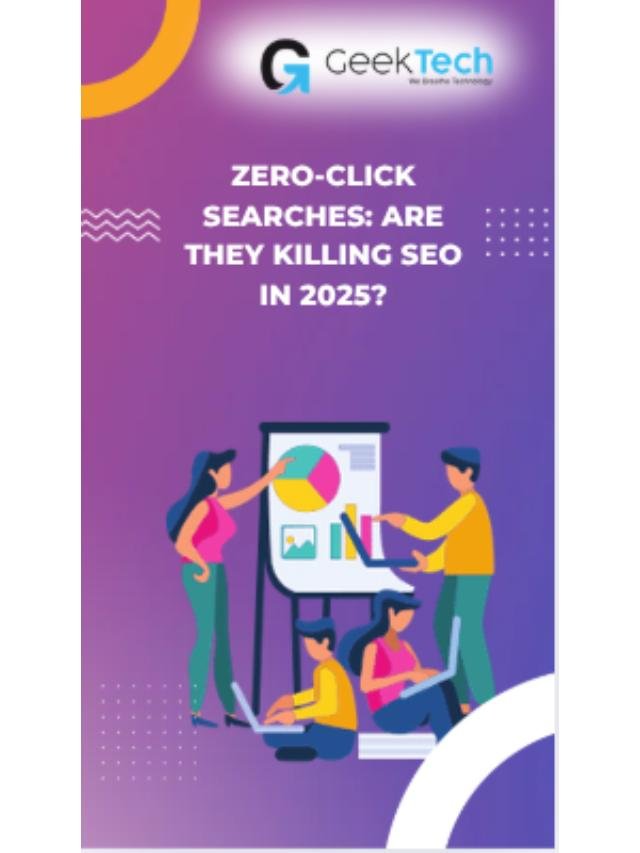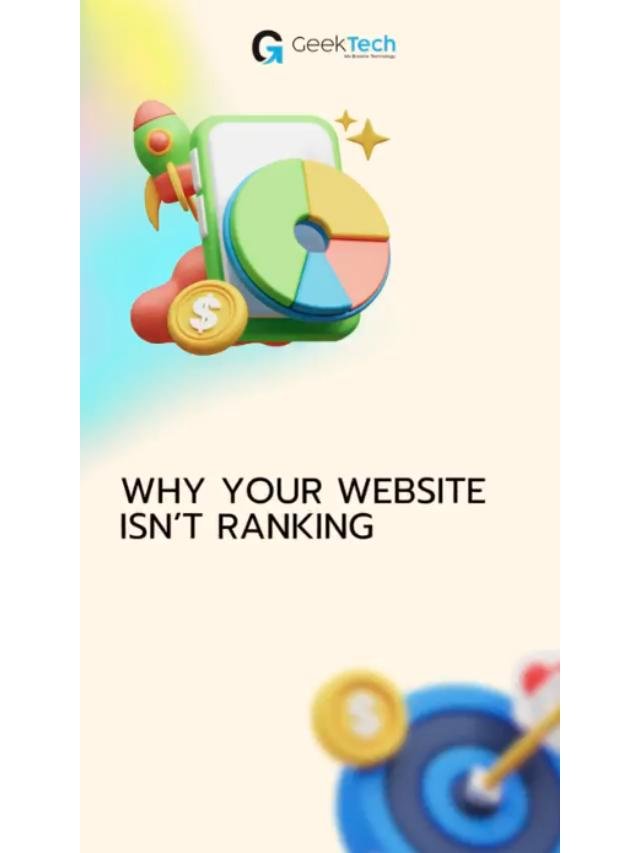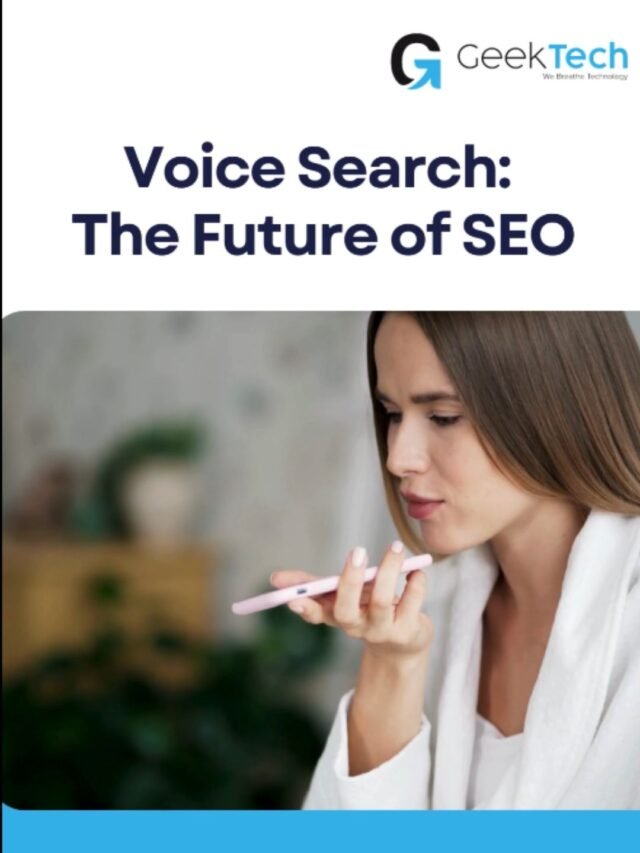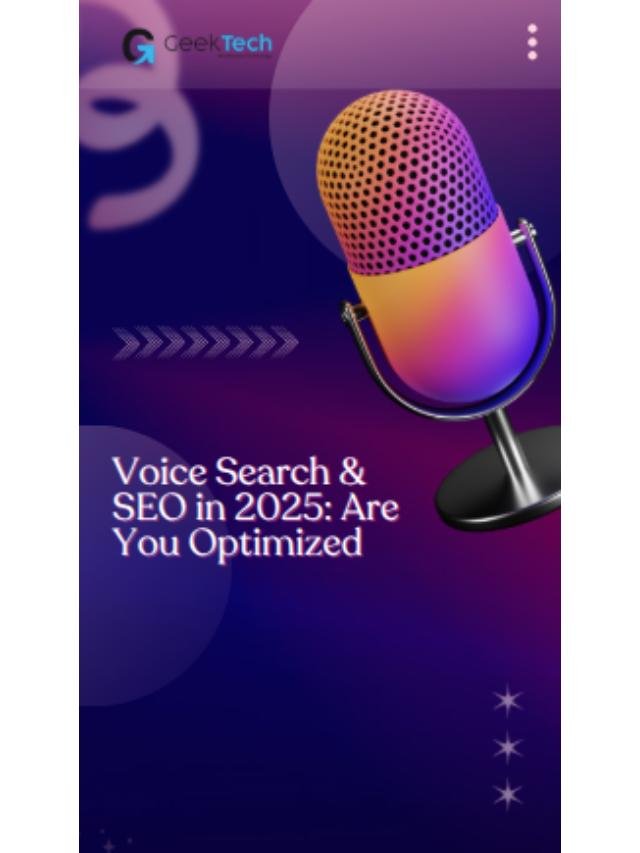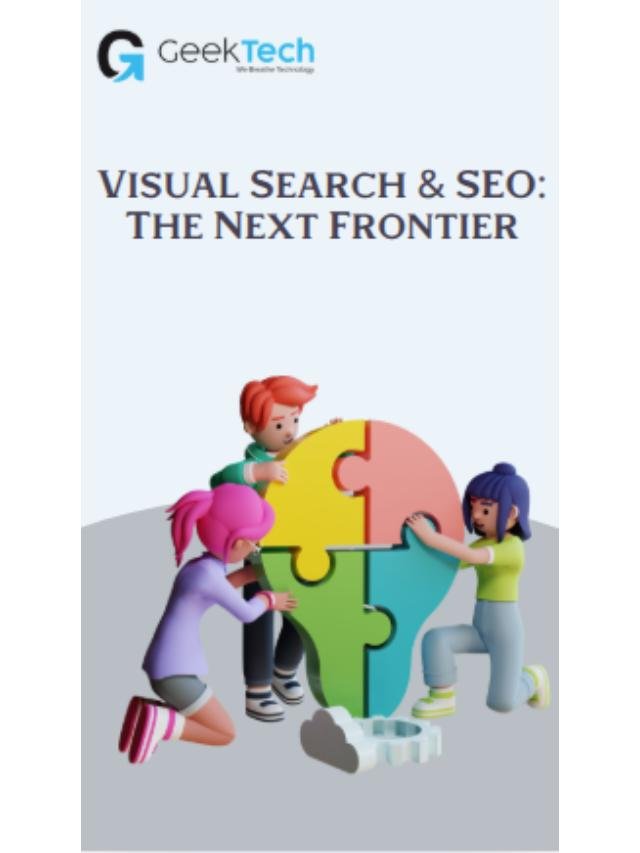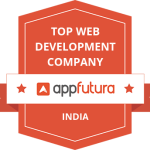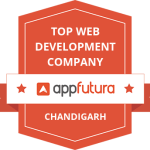PPC vs SEO: Which One Will Bring You Better ROI in 2025?
If you’re running a business in 2025, there are chances you have invested in online marketing for maximum visibility and revenue. But how do you know where to spend that money on PPC or SEO? No worries if you do not know! This blog will help you understand both. You’ll learn what PPC and SEO actually are and how much they cost. And most importantly, which one can bring you better ROI in 2025?
Let’s Understand First What Actually PPC and SEO Are
What is PPC?
PPC, or Pay-Per-Click, means you pay each time someone clicks on your online ad. After clicking, users are redirected to your service or product page to check what you offer. If the user likes the offering, they make a purchase. Otherwise, they only get brand awareness. And to make ads, the most common platform is Google Ads. Here, you choose a keyword and set a budget. Your ad shows up at the top of Google search results.
The biggest advantage of PPC is that it brings visitors to your site almost instantly. The downside is that as soon as your budget is used up by clicking, the traffic stops.
What is SEO?
SEO, or Search Engine Optimization, makes your site show up in the free (organic) search results. You don’t pay for each click. But you do have to earn organic traffic. That means creating useful content, putting the proper keywords in, and getting your site to work properly.
It takes time to move up the rankings. But once you’re there, the traffic is free and steady.
Let’s Understand with a Cost Breakdown
How much does PPC cost?
PPC can get expensive, depending on the industry. For example, a law firm may pay $20–$50 for a single click. A local bakery might pay only $1–$2. You can set your own daily or monthly budget. But you’ll need to spend more in 2025 as ad costs keep rising.
Also, you may need to hire someone to manage your PPC campaigns. Poor targeting or bad ads can waste money quickly.
How much does SEO cost?
SEO does not charge anything per click, but it is not free. You may have to shell out money when it comes to content or have to hire an SEO talent or purchase instruments. The price an average small business will pay on a monthly basis is between 500$ and 1500$. However, with SEO the efforts you put in are cumulative unlike in PPC.
Once your pages rank well, they can bring in traffic without extra spending.
Which gives better ROI on cost?
PPC gives faster ROI, but only while you keep spending. SEO has slower results, but the long-term ROI is usually better. Over a 12-month period, SEO tends to be cheaper per lead or sale.
Let’s Talk About the Results
If you launch a PPC campaign today, you might get leads by tonight. That’s why businesses like PPC for new product launches or events. It works fast.
SEO is different. You could wait 3 to 6 months before you see results. Sometimes longer. Google wants to see that your content is useful and trustworthy. So, SEO needs patience.
But here’s the thing once your site ranks well, it can stay there for a long time. Even if you stop working on it for a while. That means more traffic for less ongoing effort.
So if you want results quickly, PPC is the winner. But if you think in the long term, SEO is the winner.
Factor to Consider: Traffic Quality & Buyer Intent
Now let’s talk about the kind of traffic each brings.
PPC lets you target specific keywords, age groups, locations, and even devices. You can reach people who are ready to buy right now. That’s why PPC often has higher conversion rates.
SEO brings in people who are doing research or comparing options. These users may not buy right away. But they’re building trust with your brand. Over time, this trust can turn into more sales or repeat customers.
So, if you want instant buyers, PPC is stronger. If you want long-term customer relationships, SEO wins.
Next Factor: Algorithm Changes and Platform Dependency
Search engines change their rules often. These are called algorithm updates. If your website doesn’t follow the new rules, your rankings can drop overnight.
PPC has fewer of these problems. You set your bids and budget, and your ad shows up. But ad platforms can also change policies. Your ad account could get suspended for small mistakes.
Also, PPC makes you depend fully on paid platforms. SEO gives you more control over your website and content. You’re not renting space—you own it.
So both have risks. But SEO gives more stability in the long run if you follow best practices.
Third Factor: Industry and Business Type Considerations
Some businesses do better with PPC. For example, emergency services, new product launches, or seasonal offers often need fast traffic. PPC gives them that.
Other businesses benefit more from SEO. If you run a local service—like plumbing, dental care, or legal help—SEO helps you show up in local search results. It builds trust over time and helps you get found without paying for each click.
In 2025, industries with high competition may find PPC too expensive. SEO becomes a cost-saving method in the long term. But if your business needs fast action, PPC may still be worth the cost.
So, the “best” option really depends on what kind of business you run, how fast you need results, and how much you can spend.
The Power of Combining PPC and SEO
You don’t always have to choose between PPC and SEO. In fact, the smartest businesses use both together.
Let’s say you run a new product campaign. Use PPC to get quick attention and traffic. Use SEO to publish helpful content and reviews about the product. Over time, that content will start ranking and bring traffic without more spending.
Also, PPC data shows which keywords people click the most. You can use this data to plan your SEO content. It’s a great way to test what works.
Conversely, SEO assists you in establishing brand trust. And trust enhances how efficiently your PPC ads work. Users have a higher tendency to click an ad from a brand they trust.
So don’t choose one or the other. Instead, mix them both. Employ PPC for quickness. And SEO for long-term stability.
Which One Will Bring Better ROI in 2025?
Now let’s answer the big question: which one gives better ROI in 2025?
PPC gives faster results, but ad costs are rising every year. It works well if you need leads quickly or have a big marketing budget.
SEO takes more time, but the return lasts longer. It’s a good option for small businesses or anyone looking for long-term savings.
In 2025, ad competition is higher than ever. That means PPC costs may go up, and it may get harder to stand out. At the same time, good SEO content is still helping websites get free, ongoing traffic.
So here’s the answer: if you want quick leads and have money to spend, go for PPC. If you want a steady return that grows over time, invest in SEO. If you want the best of both, combine them.
Conclusion
PPC and SEO are both useful tools. But they serve different goals. PPC is great for speed and targeting. SEO is better for trust and long-term results. In 2025, both are still very important.
If you’re not sure where to start, no worries. We are here to help! Contact Geek Informatic & Technologies Pvt. Ltd. Plan your strategy today. We will let you know what works for you. CONTACT US TODAY!
10 Hidden Ways You Might Be Wasting Money in Google Ads
Many advertisers waste money without even realizing it. You might be targeting the wrong audience or bidding too high. These errors add up and hurt your return on investment. Avoiding such mistakes is key to making your ads profitable. In this blog, you will learn about Google Ads mistakes to avoid and how to fix them. It will cover your common pitfalls with practical solutions.
10 Costly Mistakes That Are Draining Your Google Ads Budget
1. Targeting Too Broad Audience
If your ads reach people who have no interest in your product, you waste money. Broad targeting increases costs without conversions. Many businesses make these mistakes in ads by targeting wide locations, thinking they will reach more potential customers. However, this often leads to irrelevant clicks and drives up costs without increasing sales.
A broad audience means you are paying for impressions and clicks that won’t convert. If your business sells specialized products, targeting a general audience may not yield quality leads. You need to refine your strategy to reach the right people.
How to Fix It
- Use location targeting to focus on relevant areas.
- Narrow your audience by using specific keywords.
- Use in-market and affinity audience targeting.
- Test different audience segments.
- Use detailed demographic data to fine-tune your targeting.
2. Ignoring Negative Keywords
Negative keywords prevent your ads from showing for irrelevant searches. Without them, your budget goes to wasted clicks. Many advertisers forget to regularly update their negative keyword lists, leading to unnecessary expenses.
If you sell leather purses, and your ad is coming up in the plastic bottles section, then it’s more likely to be getting random clicks. Without negative keywords, you’re likely to get traffic with no intention of buying.
How to Fix It
- Find irrelevant search terms in your reports.
- Add them to your negative keyword list.
- Keep updating the list to refine targeting.
- Use broad match negatives to filter out unwanted traffic effectively.
- Avoid common negative keyword mistakes in ads, like blocking useful search terms.
- Check Google’s keyword planner for suggestions on what to exclude.

3. Poor Keyword Match Types
Using only broad matches can make your ads appear for unrelated searches. This leads to wasted ad spend. Broad match is useful in some cases but should be used with caution, as it often results in irrelevant traffic.
Using the correct match type allows you to manage where and how your adverts are displayed. These are the typical Google Ads mistakes to avoid.
How to Fix It
- Use phrases and exact-match keywords.
- Test different match types for better control.
- Monitor search terms regularly to adjust keywords.
- Combine broad match with smart bidding to improve performance.
- Avoid using only one match type to balance your keyword strategy.
- Use Google’s search query report to see what users are searching for.
4. Not Using Ad Extensions
Ad extensions improve visibility and engagement. Without them, your ad may not stand out. Many advertisers skip Google ad extensions, and they miss out on valuable real estate in search results.
Extensions make your ads more informative and engaging. This increases your chances of getting clicks and conversions. Google Ads mistakes can be avoided by incorporating extensions.
You can also go through our Web stories to get more insights on Digital Marketing
How to Fix It
- Use site link extensions to add extra links.
- Add callout extensions for important details.
- Use structured snippets to highlight features.
- Try call extensions to encourage phone calls.
- Regularly update your extensions for relevance.
- Use price extensions if you have products with competitive pricing.
5. Writing Weak Ad Copy
Your ad copy needs to grab attention. If it’s boring or unclear, people won’t click. Poor ad copy results in low click-through rates and wasted impressions. It is necessary to rectify these PPC mistakes quickly so that you can run better ads. A compelling ad should highlight your unique selling points and include a strong call to action.
How to Fix It
- Use clear, persuasive language.
- Highlight unique benefits.
- Test different headlines and descriptions.
- Use strong calls to action to drive engagement.
- Avoid using generic phrases that do not differentiate your brand.
- Use emotional triggers to make your ads more persuasive.
6. Ignoring Mobile Optimization
Many users browse on mobile. If your ads or landing pages don’t work well on mobile, you lose conversions. Mobile users expect fast and without interruption experiences. If you fail to optimize for them, it can be costly.

How to Fix It
- Use responsive landing pages.
- Ensure fast loading times.
- Test ads on different mobile devices.
- Keep forms short and easy to fill out.
- Make sure CTA buttons are easy to tap.
- Optimize images and videos to load quickly on mobile.
7. Overlooking Conversion Tracking
Without tracking, you don’t know which ads work. You might keep spending on underperforming campaigns. Many businesses run ads blindly without measuring results. These mistakes in ads repeatedly affect your revenue. So, tracking your ad performance should be your top priority.
How to Fix It
- Set up Google Ads conversion tracking.
- Link Google Analytics for deeper insights.
- Regularly check data to adjust campaigns.
- Track micro-conversions like form submissions and phone calls.
- Use UTM parameters to track campaign performance accurately.
- Monitor return on ad spend to optimize campaigns.
8. Setting the Wrong Bidding Strategy
Google AdWords problems cost you big when using the wrong bidding strategy. It leads you to high costs and low returns. That is why manual bidding may not always be the best choice. Many advertisers set bids too high or too low without a proper strategy, and that also affects your strategy.
How to Fix It
- Test automated bidding strategies.
- Adjust bids based on conversion data.
- Monitor cost-per-click (CPC) to optimize spending.
- Use bid adjustments for different devices and locations.
- Regularly review your bidding strategy to align with goals.
- Experiment with target CPA or target ROAS bidding.
9. Forgetting to A/B Test Ads
If you run only one version of an ad, you miss chances to improve performance. Many advertisers stick with one ad format without testing alternatives. This leads to PPC mistakes that prevent optimization and better engagement.
How to Fix It
- Create at least two variations of each ad.
- Test different headlines, descriptions, and CTAs.
- Analyze performance and keep the best ads.
- Experiment with different display URLs.
- Rotate ads evenly for accurate testing.
- Use Google Ads’ responsive search ads to test multiple headlines automatically.
10. Neglecting Landing Page Experience
A bad landing page leads to high bounce rates and wasted ad spend. If users click on your ad but leave instantly, your money is wasted. Poor landing pages create a disconnect between the ad promise and the user experience. This leads to mistakes in ads that reduce conversions.
How to Fix It
- Ensure pages load quickly.
- Make them mobile-friendly.
- Keep messaging consistent with the ad copy.
- Remove unnecessary distractions from landing pages.
- Use heatmaps to analyze user behavior and improve the layout.
- Optimize call-to-action placement for higher engagement.
Conclusion
Spending money on Google Ads without proper strategy leads to waste. By fixing these PPC mistakes, you can maximize results. Avoiding these mistakes in ads helps you target the right audience and improve conversions. Now that you know what’s draining your budget, take the right actions. Apply these fixes and watch your Google Ads become more profitable! To run your PPC ads smartly, partner with Geek Informatic & Technologies Pvt. Ltd.
Facebook Ads vs. Google Ads: Which Offers Better ROI?
Two of the most powerful internet advertising platforms are Facebook Ads and Google Ads. These online platforms promote the brand, attract leads, and, more importantly, drive sales. Both are pay-per-click (PPC) models.
When both platforms serve a similar purpose, the question arises: Which platform offers better ROI for businesses? In this article, we will compare Facebook Ads ROI and Google Ads ROI, helping you understand which is the better fit for your business goals.
Let’s get started.
Before discussing which platform offers better ROI, let’s understand Facebook Ads and Google Ads separately.
Facebook Ads
According to Satista’s updated report on May 21, 2024, With roughly three billion monthly active users as of the second quarter of 2023, Facebook is the most used online social network worldwide. Additionally, businesses spent over $113 billion on Facebook Ads in 2022, highlighting its importance in digital marketing.
Here are the key features of Facebook Ads:
- Targeted Advertising:
- Facebook Ads offer advanced targeting options. Advertisers can narrow their audience by age, location, gender, interests, and even behaviors.
- Visual Content:
- Facebook’s ad formats prioritize visuals. Whether it’s an image, carousel, or video ad, the focus is on engaging, eye-catching content.
- Custom Audiences:
- Advertisers can retarget users who interacted with their website, app, or previous ads.
- Affordability:
- Facebook Ads are budget-friendly, with average costs per click (CPC) ranging from $0.50 to $2.00 depending on the industry.
- Best for B2C Businesses:
- Facebook excels in connecting with individual consumers, making it ideal for B2C companies.
Google Ads
According to Statista, the updated report was published on May 22, 2024. In 2023, Google’s ad revenue amounted to 237.86 billion U.S. dollars. The company generates advertising revenue through its Google Ads platform, which enables advertisers to display ads, product listings and service offerings across Google’s extensive ad network (properties, partner sites, and apps) to web users.
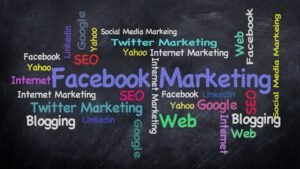
Here are the key features of Google Ads:
- Search Intent Targeting:
- Google Ads target users who are actively searching for products or services. This means higher purchase intent.
- Diverse Ad Formats:
- It offers search ads, display ads, shopping ads, and YouTube ads catering to various business needs.
- Wide Reach:
- Google Ads extend beyond search results, appearing on partner websites and apps through the Google Display Network.
- Cost Variability:
- Google Ads tend to have higher CPCs, averaging $1 to $2 on search networks and $0.50 on display networks.
- Best for B2B Businesses:
- Google’s focus on search intent makes it ideal for B2B businesses looking for high-quality leads.
Facebook Ads vs. Google Ads: A Direct Comparison
Audience Targeting
- Facebook Ads:
- Offers superior demographic and behavioral targeting.
- Great for finding new customers through interest-based targeting.
- Google Ads:
- Targets users based on search intent.
- Ideal for capturing demand rather than creating it.
Cost Efficiency
- Facebook Ads:
- Lower CPC, making it budget-friendly.
- Effective for small to medium businesses.
- Google Ads:
- Higher CPC but often yields high-quality leads.
- Works well for businesses with larger budgets.
ROI Potential
- Facebook Ads ROI:
- Delivers excellent ROI for B2C brands with engaging visual campaigns.
- Works well for nurturing customer relationships.
- Google Ads ROI:
- Provides better ROI for businesses with high-value products or services due to intent-based targeting.
Ad Types and Performance
- Facebook Ads:
- Best for creating brand awareness and engaging audiences.
- Requires visually appealing content.
- Google Ads:
- Best for driving conversions directly from search intent.
- Requires keyword-optimized campaigns.
Which Platform Offers Better ROI?
For Small Businesses
- Facebook Ads typically offer better ROI due to their affordability and audience reach. Small businesses can achieve higher visibility without significant investment.
For High-Intent Campaigns
- Google Ads often deliver better ROI for high-value, intent-based campaigns. For example, businesses in niches like legal services or real estate benefit from Google’s specific targeting.
For Long-Term Growth
- Using both platforms strategically provides the best results. Facebook Ads drive awareness, while Google Ads convert searchers into buyers.
Factors Affecting ROI
- Ad Objectives: The ROI depends on whether your goal is awareness, lead generation, or conversions.
- Target Audience: Facebook Ads work best when targeting broader audiences, while Google Ads excel in high-intent targeting.
- Budget Allocation: Facebook Ads offer better value for small budgets, whereas Google Ads demand more investment but may yield higher-quality leads.
Case Studies: Real-World Insights
E-Commerce Brand:
- A small e-commerce business used Facebook Ads for brand awareness and Google Ads for conversions. The combination resulted in a 30% increase in ROI within three months.
Local Service Provider:
- A plumbing service focused solely on Google Ads to capture high-intent leads. This led to a 25% higher conversion rate compared to Facebook Ads.
B2C Retailer:
- By leveraging Facebook’s carousel ads, a clothing brand increased click-through rates by 50% and generated a 20% higher ROI compared to using Google Ads alone.
Combining Facebook Ads and Google Ads
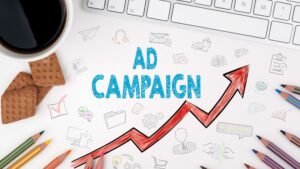
To maximize ROI, consider a combined approach:
- Use Facebook Ads to build awareness and nurture potential customers.
- Use Google Ads to capture high-intent leads and drive conversions.
- Retarget your audience on both platforms for a holistic campaign.
When to Choose Facebook Ads
- Visual-Driven Campaigns: If your products or services benefit from visual representation, Facebook is a good choice.
- B2C Marketing: Ideal for connecting directly with individual consumers.
- Low-Budget Marketing: Small businesses can achieve great results without high expenditure.
- Brand Engagement: Facebook’s interactive ads promote stronger brand connections.
When to Choose Google Ads
- Search Intent Targeting: If your audience is actively searching for your offerings, Google Ads are a good option.
- B2B Marketing: Perfect for industries like technology, consulting, or manufacturing.
- Immediate Conversions: High-intent audiences often lead to faster results.
- High-Value Sales: Google Ads are usually ideal for businesses with higher-priced products or services.
Final Thought
The return on investment (ROI) of Facebook Ads and Google Ads is based upon the objectives, budget, and target demographics of your business. Facebook Ads are suitable for increasing brand awareness and reaching users. Google Ads perform better in capturing demand and generating revenue almost immediately.
A mix of both platforms often results in the maximum ROI. Review your marketing plan and spend resources accordingly. When optimizing correctly, Facebook Ads ROI and Google Ads ROI can significantly help your business. Understanding your goals and testing with different campaigns can help you determine which platform or combination will help you achieve the most success.
Partner with Geek Informatics & Technologies Pvt. Ltd. for Smarter Ad Campaigns and Higher ROI!
Change your advertising approach now! Geek Informatics & Technologies Pvt. Ltd. offers services to help you achieve the best results on Facebook and Google Ads using efficient strategies. The world needs successful campaigns, so let us create them.


